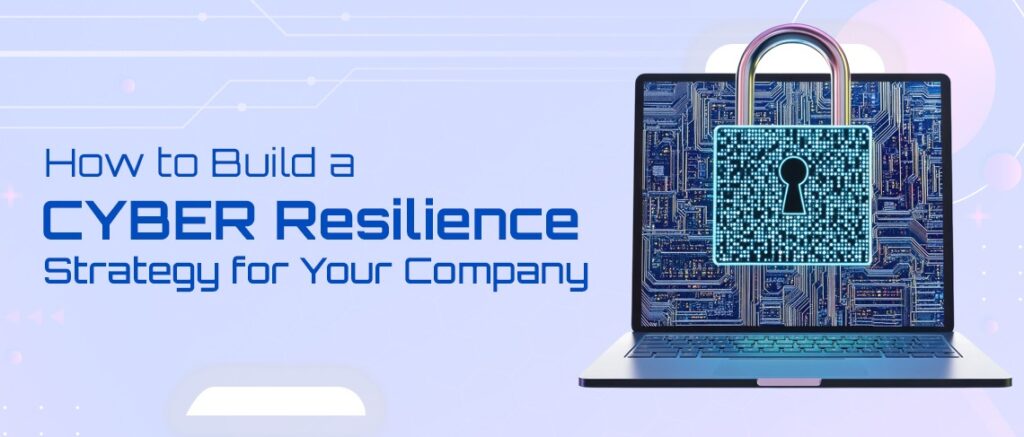Cyber attacks are no longer a problem for large corporations. Over recent years, cybercriminals have shifted their focus to smaller businesses, which are often seen as “easier prey” due to weaker cybersecurity measures. Studies indicate that over 61% of small businesses experienced a cyber attack in 2022, highlighting the urgent need for proactive measures.
If you’re a small business owner or entrepreneur, cybersecurity might feel overwhelming, but it doesn’t have to be. This guide will break down the essential steps to protect your business, starting with understanding common cyber threats to creating a robust cybersecurity strategy tailored to your needs. By the end of this post, you’ll have actionable insights to safeguard your business effectively.
Understanding Common Cyber Threats
To protect your business, you first need to understand the threats you’re up against. Below are three of the most common types of cyber attacks that specifically target small businesses:
Phishing
Phishing attacks involve fraudulent emails, messages, or websites designed to trick recipients into revealing sensitive information such as passwords, credit card details, or personal data. These emails often look like they come from trusted organizations, such as banks or even your own team members.
How to spot it: Be cautious of emails with urgent language (“Act now!” or “Your account will be suspended!”) or requests for confidential information. Always verify the sender’s email address carefully.
Malware
Malware, or malicious software, includes viruses, worms, and spyware. Cybercriminals may use these to access sensitive data or damage your systems. Malware often enters systems through suspicious downloads or unsecured networks.
Prevent it: Don’t download attachments from unknown sources. Use antivirus scanners to check for potential threats.
Ransomware
Ransomware encrypts your data and holds it hostage until you pay a ransom. This can be particularly devastating for small businesses.
Tip: Regularly back up your data so that, in the event of a ransomware attack, you can restore it without paying the ransom.
By staying informed about these threats, you can better prepare your business to either mitigate or avoid them altogether.
Assessing Your Business’s Vulnerabilities
Every business is unique, and so are its cybersecurity risks. Here’s how to conduct a simple risk assessment:
- Identify Sensitive Data: Pinpoint critical data such as customer information, financial records, and proprietary business details.
- Analyze Threats: Determine how this data may be accessed, both internally and externally. Examples include unprotected networks, weak passwords, or disgruntled employees.
- Evaluate Existing Measures: Do you already have protective measures such as antivirus software, encrypted devices, or firewalls in place?
- Prioritize Risks: Identify vulnerabilities that pose the highest risk to your business and address them first.
Implementing Basic Security Measures
Even basic cybersecurity measures can dramatically reduce the chances of a successful attack. Some of the most effective and affordable steps include:
1. Use a Firewall
A firewall acts as your business’s first line of defense, blocking unauthorized access to your network. Ensure it’s enabled not only at your office but also on employees’ remote devices.
2. Invest in Antivirus Software
Antivirus software helps prevent malware from infecting your systems. Keep it updated regularly to combat the latest threats.
3. Password Management
Weak passwords are a huge vulnerability in most businesses. Invest in a password management tool for your team to generate and store strong, unique passwords securely.
4. Secure Your Wi-Fi
Your Wi-Fi network should be encrypted and password-protected. Avoid using default passwords for your router.
Employee Training on Cybersecurity Best Practices
Even the best security tools can fail if your employees aren’t trained to recognize threats. Remember, human error accounts for nearly 82% of data breaches. Here’s how to get your team involved:
- Educate on Phishing: Provide workshops or courses on how to spot phishing emails.
- Create Reporting Processes: Clearly outline what employees should do if they suspect a breach.
- Set Policies for Personal Devices: Ensure all devices that access company data are properly secured.
Regular training sessions will empower your team to act as the first line of defense.
Data Backup and Recovery
Data loss, whether due to ransomware or unexpected hardware failure, can cripple a business. Preparing for the worst-case scenario is essential. Here’s how:
- Schedule Regular Backups: Back up your data at least weekly (or daily, if possible). Use both on-site storage and cloud-based options.
- Test Your Backups: Don’t just assume your backup system works—test it regularly to ensure you can restore your data if needed.
- Set Recovery Time Objectives: Determine how quickly critical systems need to be restored after downtime to minimize disruption.
Creating a Cybersecurity Plan
A well-crafted cybersecurity plan UAE provides a clear roadmap for protecting your business. Here’s how to create one in simple steps:
Step 1: Assess Your Resources
Determine what budget, time, and expertise are available for cybersecurity implementation. For small businesses, cost-effective solutions like outsourced IT support may be worthwhile.
Step 2: Define Policies and Procedures
Create policies that outline how sensitive data is handled, password requirements, and employee training schedules.
Step 3: Employ Monitoring Tools
Use log management and intrusion detection systems to continuously monitor for potential breaches or unusual activity.
Step 4: Establish an Incident Response Plan
An incident response plan will define clear steps to mitigate, respond to, and recover from cyberattacks.
Step 5: Review and Update Regularly
Cyber threats constantly evolve, so your cybersecurity plan should also evolve. Schedule regular reviews to ensure your plan stays effective.
A Proactive Approach to Cybersecurity Sets You Apart
Cybersecurity is no longer optional—it’s a necessity for any small business that handles customer data, conducts online transactions, or stores sensitive information.
Taking a proactive approach to cybersecurity ensures your business can operate smoothly, maintain trust with customers, and avoid costly disruptions. By addressing vulnerabilities, implementing strong security measures, and training your employees, you can reduce potential risks.
If you’re ready to take the next step in securing your small business, consider trying out cybersecurity tools and software that streamline these processes. Don’t wait until it’s too late—start protecting your business today.



